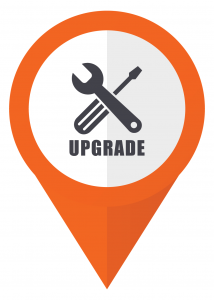We all have times and projects that are beyond the available resources. It is a goal too big or a window too small for our limited resources. In the world of business, this may be too many tasks and not enough team members. In our personal lives, it may be a day full of too many tasks and not enough hours. There are ways to work through these situations. Fortunately, we can even get a "win" at times by embracing some of these common ways to overcome shortcomings. These include a lack of resources or a lack of skills.
Face The Reality of Limited Resources
The often largest hurdle is to admit you have limited resources for your objectives. It can be tempting to try to jam a square peg in a round hole. That includes trying to achieve a goal even with limited resources. This approach is not different from sticking your fingers in your years and loudly saying "I can't hear you" to avoid bad news. It is not beneficial and amounts to ignoring the problem. I have never seen this as a valid approach. It blocks us from taking productive actions like those that follow.
Some try to aim for the stars with the idea of at least reaching the moon. However, it seems like too often, you end up flat on your face. There has to be at least a plan for hitting that lesser (more reasonable) target. This approach also helps avoid spending time on tasks or features that end up being unfinished or of lower quality.
Adjust Scope
The easiest way to match resources to a goal is to change the goal. That may mean accepting a solution that is only 80%. It may mean waiting longer or spending more money. Any of these changes may be acceptable. However, make the hard decisions and adjust your goals. It allows the team to focus on the new goal and ignore things that do not contribute. In many projects, this decision can remove tasks from the board and free up time to get to a high-quality and acceptable solution. In some cases, this will equate to highly marketable versions 1 and 2 of a product instead of a late version 1.
Sooner Rather Than Later
The sooner you accept that changes are needed, the better. I have seen projects go until the figurative final hour before trying to make adjustments. Many of those projects would have been delivered on time if only they had adjusted the course sooner. The more time you have left in the journey, the less course correction is required. In software, this can be a substantial factor. Early decisions can free up resources in every area, from design and analysis through to testing and deployment. An excellent example is the choice of platforms. I have seen projects drop a native mobile requirement late in the game that literally could have reduced the overall cost and timeframe by half if done sooner.
Wait For The Estimates And Accept Them
Estimation can be time-consuming. Nevertheless, it is precious. Good estimates can warn you of issues in scope or timing long before they become a true obstacle. Take the time to estimate tasks and effort. Then, accept those estimates. When you have estimates that put you beyond a target, adjust the target, do not push back on the estimates. This process will create a bad environment where people provide what you want to hear instead of reality. That can lead to the emperor having no clothes, and you are the emperor in that case.
Working Smarter With Limited Resources
It is almost a cliche to work smarter, not harder. Nevertheless, there is a lot of value in this approach when you have limited resources. We often have extra things that are done as part of a project. These tasks include estimation, planning, administration, polishing, and other items that may not be needed. While they may have value, they may slow you down. We can see this in race cars. They strip down the vehicle to only what is necessary for the race. When you lack the resources to do it perfectly, find the ways you can cut to the core.
A project that requires people to give up weekends or work long weeks of overtime should also reduce scope and clutter. That means every task and the scheduled meeting should contribute to the goal. The time for checking off a box or making someone feel comfortable was probably passed a while back. That includes up to a CEO that wants to check in on progress all the time. When those check-ins start to take the team away from the goals, be honest and find a less intrusive way to keep them informed. Likewise, if something has been going bad or taking you off track (including specific resources), then do not be afraid to make adjustments. A bad trend is likely to continue until you make a change.
The Shortest Path
The bottom line is that you need to focus on the goal. Make sure you have a clear picture of what is necessary and what is not. Then plot the shortest route to get to the end. Drop everything not completely necessary first. Once the simplest path (and tasks) is defined, you can add back in things that are likely to keep you on track. When you do this, cut deep. It is easier and more effective to add something back in later if time permits than cut something out down the road.


